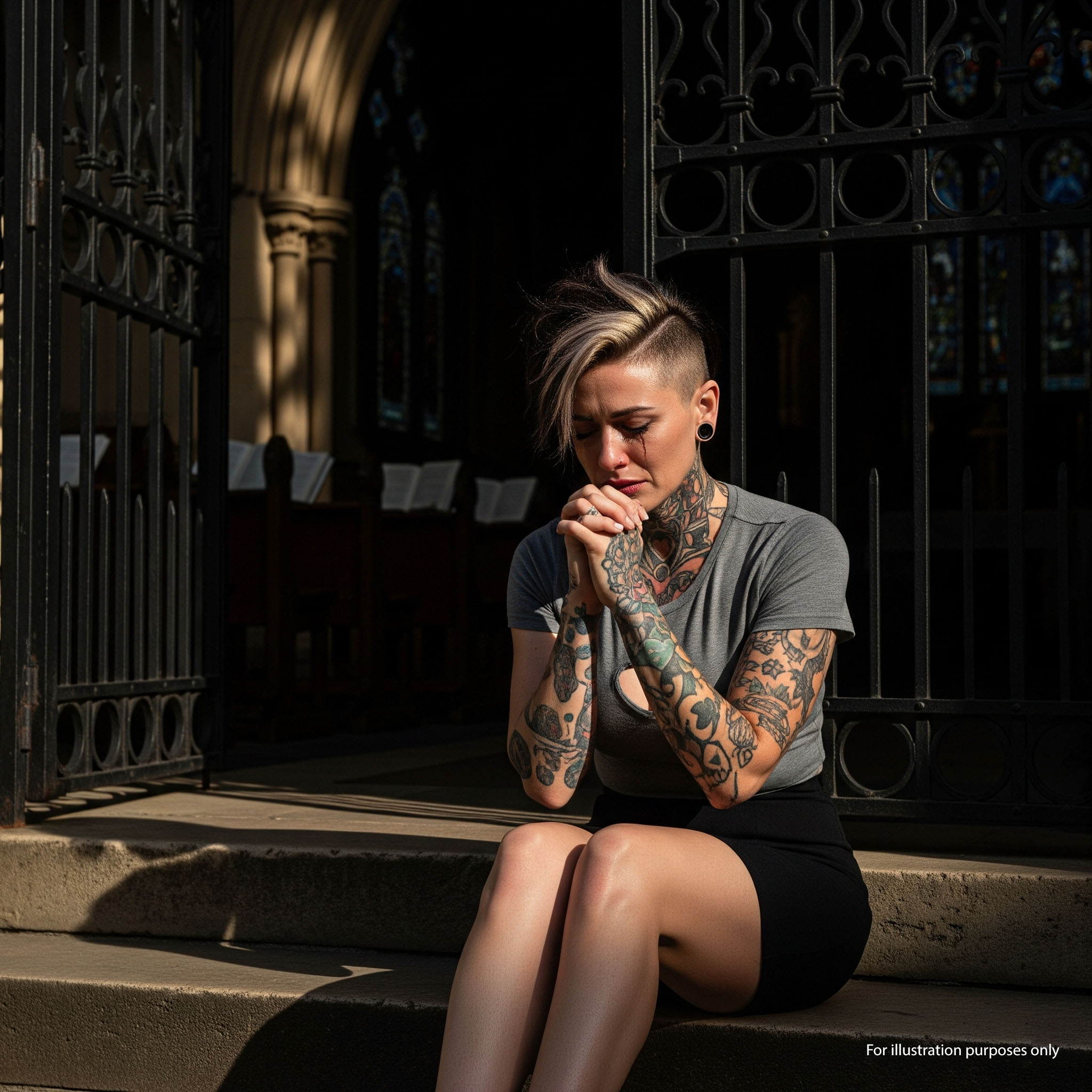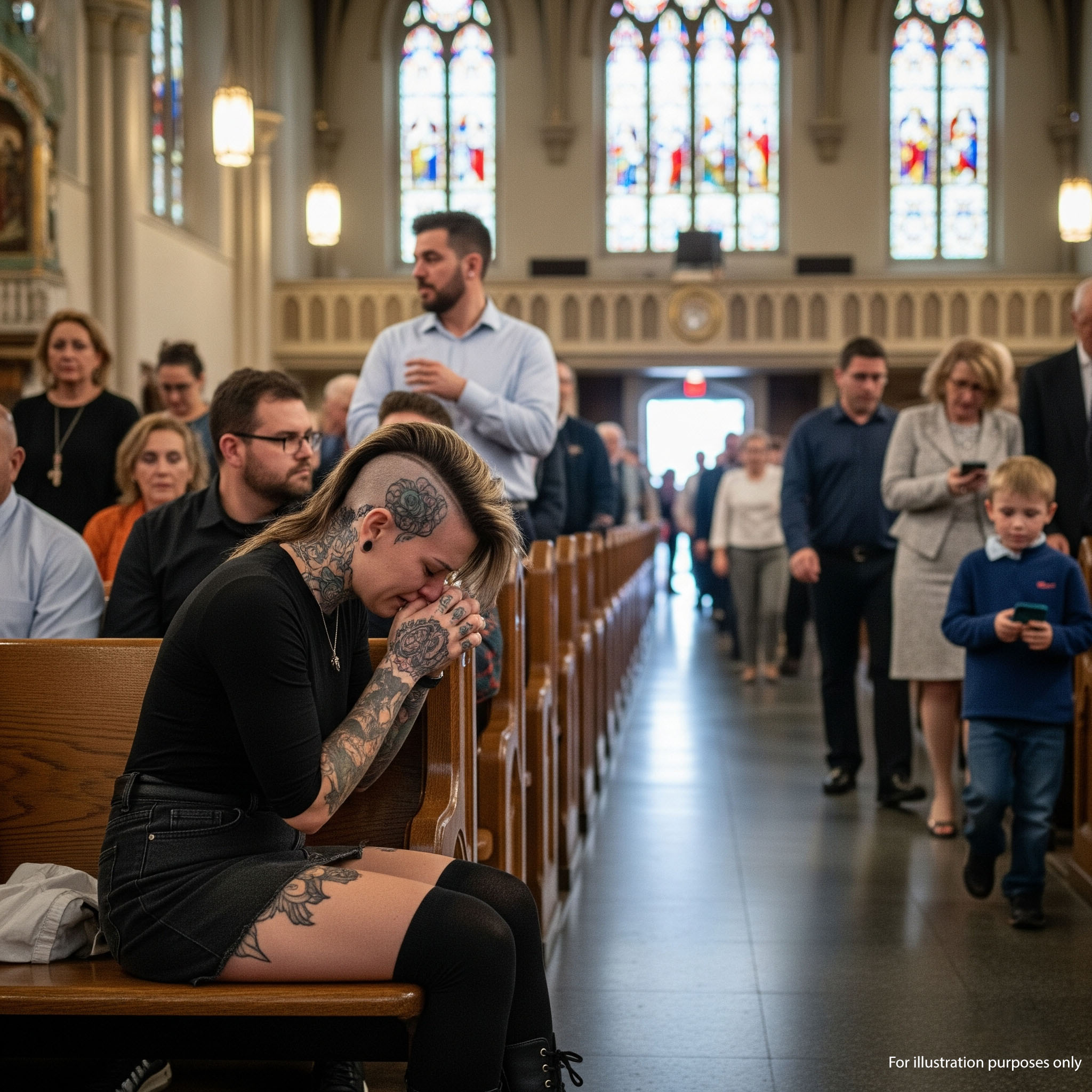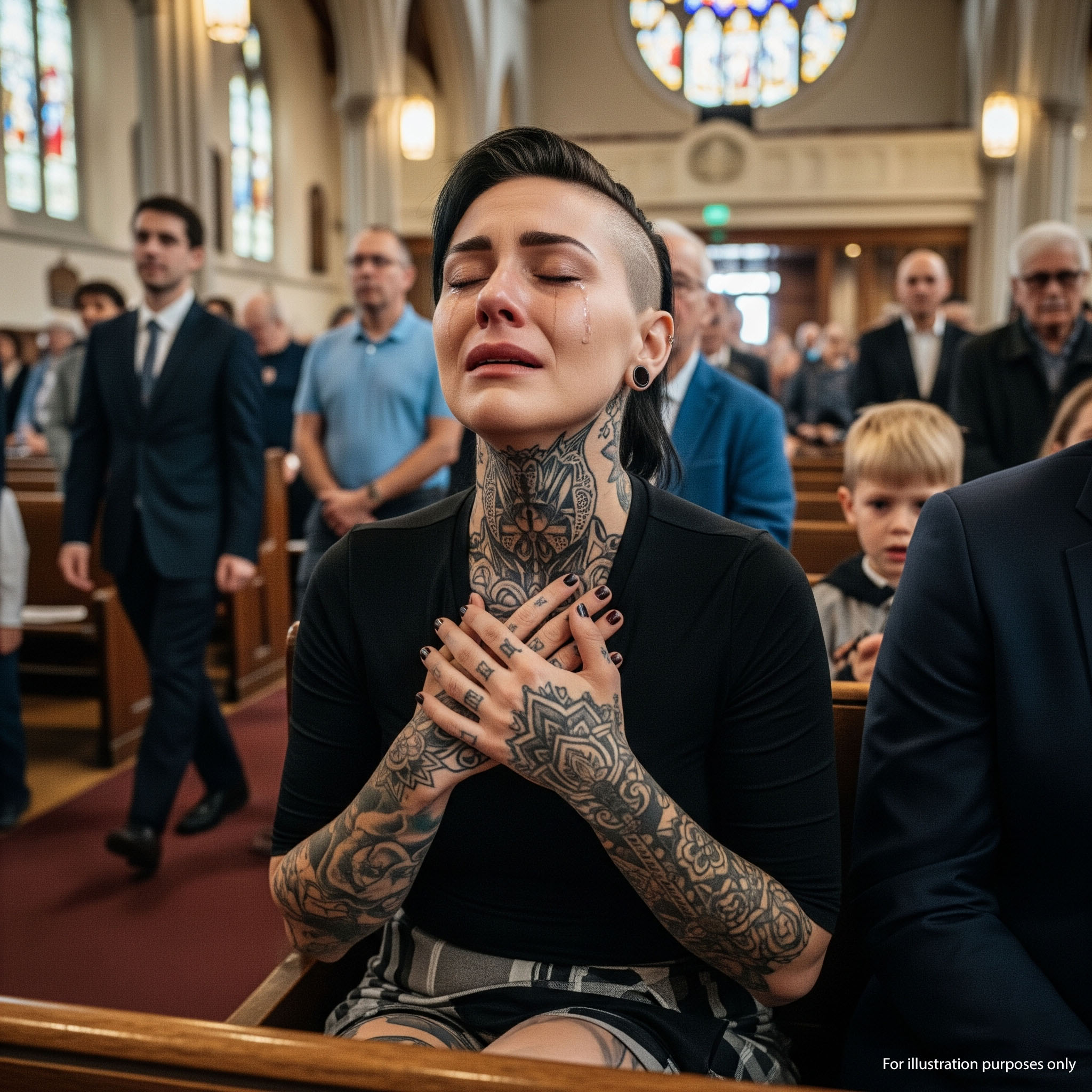It was just another Sunday morning—or so I thought.
As I walked into the familiar stillness of the sanctuary, my mind was already drifting toward the usual rhythm of worship: the hymns, the scripture, the quiet comfort of routine. I took my seat near the front, the scent of old wood and candle wax filling the air.
And that’s when I saw her.
She was seated alone, halfway back. Mid-40s, maybe. Tattoos ran the length of her arms, like a mural of memories. Silver glinted from several piercings. Her outfit was bold—vibrant colors, tight denim, combat boots.
I’ll be honest: I was startled.
Not because she looked bad—but because she didn’t look how I thought someone should look in church.

Growing up, church was sacred ground. Dresses and ties. Soft tones. Covered shoulders. Silence and solemnity. And here was this woman, looking like she’d walked in from a rock concert.
A part of me recoiled. Another part whispered: Why does it matter?
Still, after the service, I approached her. Politely, carefully, I said:
“You know… you might consider something a little more toned-down for church. It’s a sacred space, after all.”
She didn’t flinch. She just looked at me, steady and clear-eyed, and said:
“How I look has nothing to do with you.”
And in that moment, my heart paused.
A Mirror I Didn’t Expect
Her words echoed for days. Not in anger, but in revelation. Why had her presence bothered me so much? Was I genuinely concerned about respect for the space—or just clinging to outdated expectations?
The truth hit harder than I expected: I wasn’t reacting to her out of faith. I was reacting out of habit.
Somewhere along the way, I’d confused tradition with truth.
That woman’s tattoos might have told a story of pain and redemption. Her piercings could have symbolized freedom, survival, or even a new beginning. But I hadn’t asked. I hadn’t seen her. I’d only seen what she wore.
Do Clothes Define Worship?
There was a time when churchgoers dressed their absolute best—out of reverence, yes, but also because it was expected. A silent code.
But today, as people search for faith in a fractured world, they come as they are—wounded, searching, imperfect. And they may carry those wounds on their skin.
Should we turn them away for not blending in?
Faith isn’t about conformity. It’s about connection. And sometimes, the person who looks least like us has the most to teach us about grace.
The True Dress Code: Compassion
Church isn’t a fashion show. It’s not a museum for the righteous. It’s a hospital for the broken, a lighthouse for the lost.

If someone walks in with ripped jeans and tattoos, we shouldn’t be whispering in judgment. We should be thanking God that they walked in at all.
I think of Jesus—who dined with tax collectors, touched lepers, and embraced the outcasts. He never cared about appearances. He cared about the heart.
And if we’re truly following Him, shouldn’t we do the same?

Tradition and Transformation
This doesn’t mean we abandon tradition. There’s still beauty in dressing with respect for sacred spaces. There’s still reverence in routine.
But reverence isn’t tied to a hemline.
We can honor tradition while opening the door wider for individuality, for authenticity—for people to come as they are.
Because the church isn’t just a building.
It’s a gathering of souls.
And every soul—regardless of style—deserves to belong.
A Pew Saved for Her
Next Sunday, I’ll be back in the sanctuary. And if that woman returns, I hope she sits near me. I hope I have the courage to ask about her tattoos, to hear her story.
And maybe—just maybe—I’ll learn something about faith that no sermon ever taught me.
Because grace often walks in looking nothing like we expect.